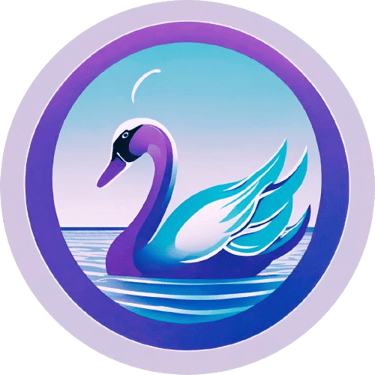Using Google Docs Like a Pro: Tips & Tricks for Writers


Let’s get one thing straight: if you're still using Google Docs like it’s just a glorified typewriter, you're missing out on a treasure chest of tools that could turn your writing game from "meh" to “Manuscript of the Year.” Whether you’re punching out a novel, hammering a screenplay, or ghostwriting memoirs for your dog’s Instagram account, Docs has stealthy power under its clean little hood. So buckle in, fellow scribes—here’s how to turn that blinking cursor into a wand.
Docs Is More Than a Blank Page
1. Style Like a Sorcerer: Use Custom Styles
Stop manually formatting every heading like it’s 1998.
Set your Title, Headings, and Normal Text just once—then hit “Update ‘Heading 1’ to match” like a boss.
Save yourself hours of CTRL+C, CTRL+V despair. Use consistent styles to auto-build a Table of Contents later with one click. More on that in a moment.
Pro move:
Create a “Writer Template” Doc with your favorite fonts, margins, and formatting already set. Duplicate for every new project.
2. The Magic of Version History
You ever delete a paragraph, regret it, then spiral into existential dread?
Fear not.
Go to File > Version History > See version history
Restore past versions or copy from them without wrecking your current flow.
No more hoarding 47 copies of “My Draft FINAL v2 ACTUAL FINAL (2).docx.” Google Docs is your safety net.
3. Voice Typing: The Unsung Muse
Inspiration struck mid-toast?
Hit Tools > Voice Typing and speak your genius into existence. Sure, you’ll need to clean up the auto-punctuation mess, but it’s worth it when the words are flowing faster than your typing fingers can dance.
Bonus: Your cat will judge you for talking to your laptop. Wear it like a badge.
4. Comment Like a Critic (and Resolve Like a Hero)
Leave yourself snarky notes or profound reminders:
“Fix this garbage ending. You’re not Tarantino.”
“Come back and add a metaphor about birds.”
Use CTRL + ALT + M (or ⌘ + Option + M on Mac) to comment without lifting your fingers too far from the battlefield. Then, when you've addressed your internal critic (or your editor), click “Resolve” and bask in the glow of your own progress.
5. Explore: Your Built-in Sidekick
Writing a blog about dolphins and forgot how echolocation works?
Hit Tools > Explore (or click the little compass in the bottom right).
Google search within your doc. No tab-switching. No distractions. Just you and your ever-expanding brain.
Also great for pulling royalty-free images without risking a lawsuit from that angry stock photo guy.
6. Outline Mode: Your Story’s Backbone
Turn on View > Show Outline to see a living map of your doc based on your headings.
Jump between scenes, sections, or rambling tangents with ease.
Drag-and-drop structure like you’re storyboarding a Netflix original.
For long-form writers, this is the difference between drowning in paragraphs and swimming through chapters.
7. Add-Ons: Turn Docs Into a Swiss Army Pen
Try these to pimp your Doc:
Grammarly – for when your brain skips words your fingers forgot to type.
Doc Tools – bulk capitalize, count words, sort lines alphabetically.
ProWritingAid – grammar, style, clichés, pacing. Basically, a writing coach who doesn’t charge hourly.
8. Table of Contents: Instant Structure
When your doc is bursting with chapters, headings, and mini-essays, slap in a Table of Contents (Insert > Table of contents).
Bonus: It's clickable, and updates automatically when you edit headings. You’ve just made your doc navigable and smugly professional.
9. Shortcuts to Save Your Sanity
Here are a few shortcut sorceries:
Ctrl + Shift + C – Word count.
Ctrl + K – Insert link.
Ctrl + / – Brings up the full shortcut menu. It’s like peeking behind the curtain of Oz.
10. Offline Mode: For Cabin-in-the-Woods Writing Retreats
No Wi-Fi? No problem.
Go to File > Make available offline.
Now your doc lives on your hard drive like the good old days, but syncs up when you’re back in civilization.
Google Docs isn’t just a tool—it’s your co-writer, your structure, your memory, your armor. Once you stop treating it like a basic notepad and start wielding it like the digital Excalibur it is, your writing process becomes smoother, faster, and smarter.
So go on. Write that novel. Draft that manifesto. Plot that YA fantasy about time-traveling librarians.
And let Docs do the heavy lifting.
Stay sharp, stay weird, and write like a pro.
Want more writing tools and geeky guides like this? I’ve got drafts for days. Just ask.
